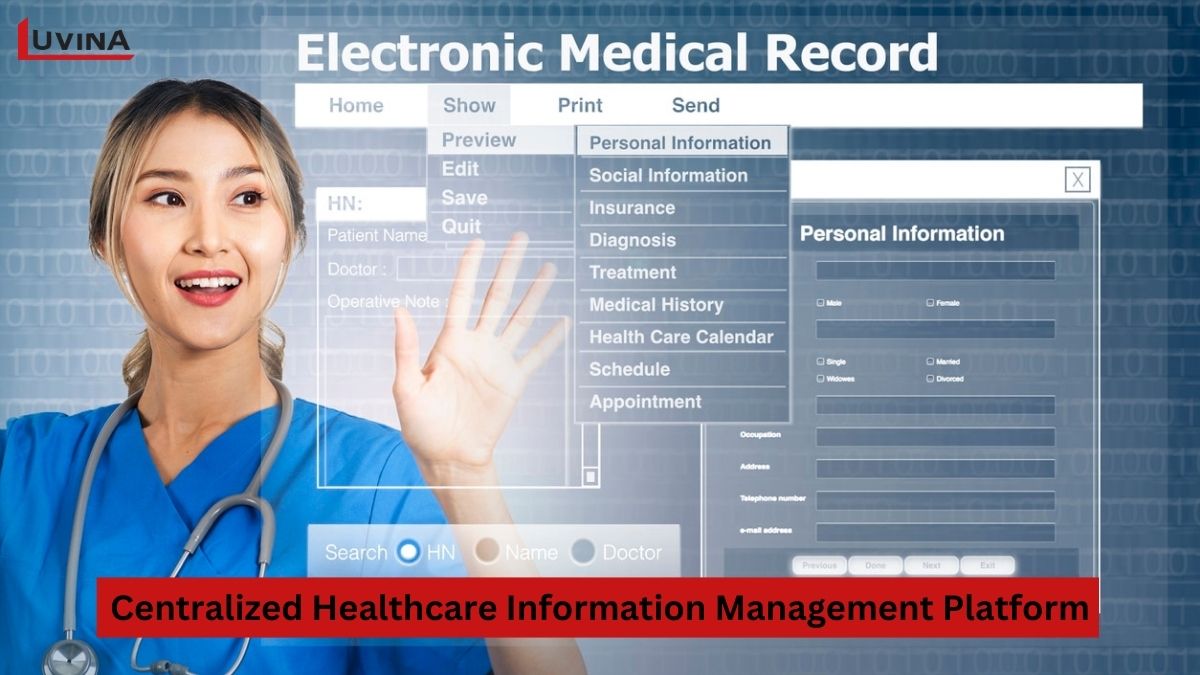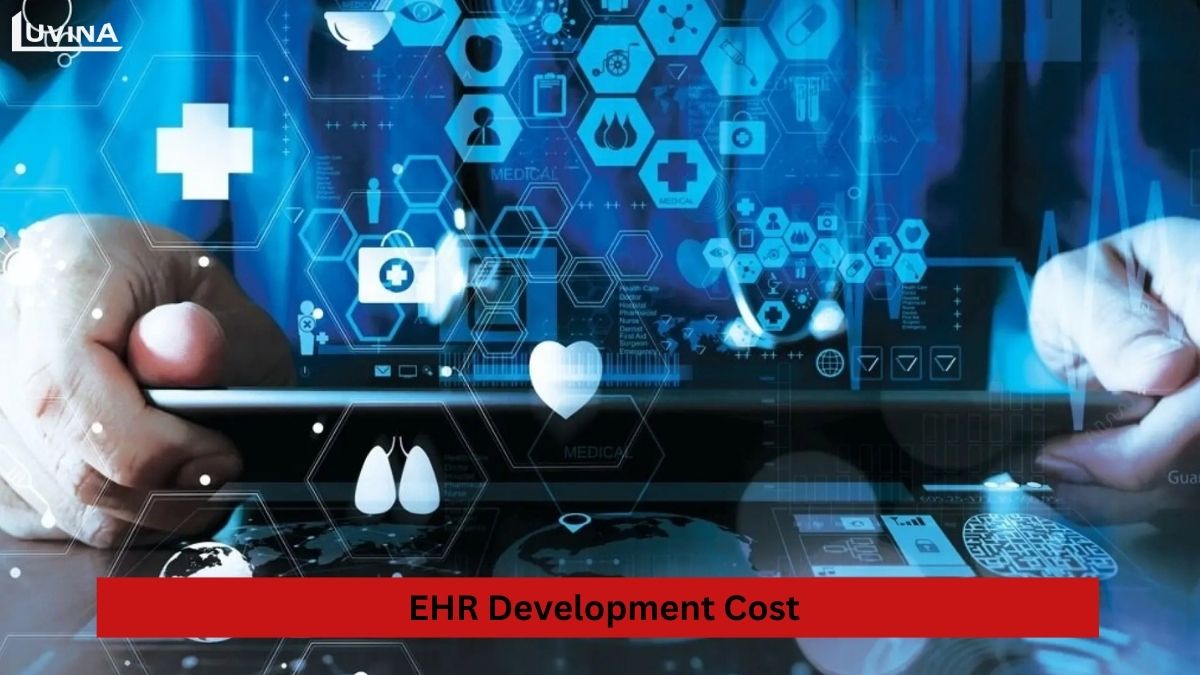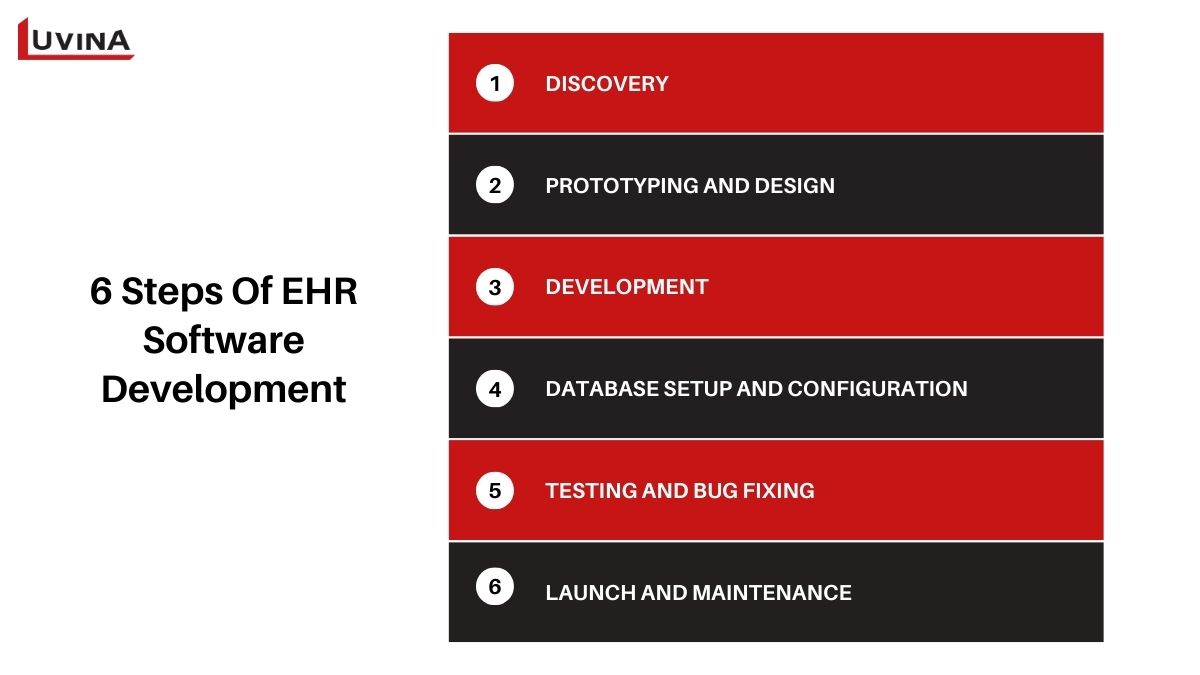According to the report, the global Electronic Health Records (EHR) market size is expected to reach 52.98 billion dollars by 2027, with an annual growth rate of 9.3%. Are you looking to learn about EHR software development to build an electronic health record system for your clinic? Then keep reading, because in the article below, we will guide you through the detailed processes and essential information you need to know for successful EHR/EMR development.
What is EHR/EMR Software?
The days of bulk files and brown paper records, which had to be physically shifted from one department to another, have become extinct. EMR EHR software development has been and will continue to make life easier for everyone involved in healthcare, including healthcare providers, doctors, medical staff, and patients.
So, what exactly is EHR/EMR software?
EHR software is the system that gathers, stores, and shares structured summaries of patients’ digital medical records. All authorized individuals involved in a patient’s treatment, from doctors, pharmacies, and labs to nursing homes and patients, can share medical information through this EHR software. In simple words, EHR software development offers users a single platform where they can access all the vital health information and are not able to miss any important details.

Another related term is EMR software development. EMR and EHR are not very different from one another, and for this reason, both terms can often be interchanged. Scope, usage, and accessibility are the major grounds where the difference between EHR and EMR lies. To help businesses choose either EHR software development or EMR development, a detailed analysis of the present business scenario would be able to allow businesses to make a justified selection of one over the other.
EMR or EHR hospital software programs generally help labs and specialists share information more easily, enhancing coordination and collaboration. Healthcare professionals can reduce errors through these software solutions, making the entire treatment process smoother and more time-efficient.
According to experts, custom EHR software development is the ideal choice if a business plans to manage information internally within its own medical facility. In this article, we will delve deeper into custom EHR software development, as this type of software is more commonly used for integrating healthcare services.
Must-Have EHR System Features
Hospitals and clinics today are looking to have their own customized EHR software and medical record management systems that meet their specific needs. While the development process and EHR system features may vary, there are several core features that form the basic structure of such systems. Below are some key features required in EHR software development.
1. Patient Portal
This is a fundamental and crucial feature in custom EHR software development. The patient portal records, adds and displays all data, such as name, medical information, allergies, test history, medications, and other patient-related information. The patient portal can be accessed not only by doctors, nurses, and labs but also by the patients themselves.
2. Patient Information Management
This feature handles most administrative tasks, including registering new patients, admissions, transfers, and discharges. It replaces the need for staff at reception to manually ask for patient details and contact information during the first visit. With this feature, each patient is assigned a unique ID in the system, often called a medical record number. This ID tracks all future interactions with the patient, from test results to diagnoses, medications, and appointments.

3. Appointment Scheduling and Management
Most EHR software today allows patients to schedule appointments directly in the system in real-time. This feature also helps doctors manage appointments and access detailed patient information. It eliminates the need for separate scheduling tools and manual entry of appointment details. Patients receive appointment reminders and can cancel or reschedule with ease.
3. Medical Billing and Insurance Claims
These are critical features to include in custom EHR software development. The system should support payment processes and insurance claims to reduce the administrative burden. EHR systems simplify this by automatically generating invoices after patient visits and submitting claims to insurance companies. Additionally, this feature can help medical facilities track revenue and expenses, as well as predict potential revenue growth.
4. Interoperability
Interoperability is an essential EHR system feature to ensure smooth data exchange and communication between different healthcare systems. If you want to facilitate easy sharing of patient information across multiple healthcare facilities while protecting data from being shared externally, this feature must be integrated into the EHR software.
5. Lab Integration
Integrating labs into EHR software development allows doctors to track and receive lab results, which form the basis for treatment. This feature streamlines the entire process and enhances reliability. Lab technicians can also access patient information and history to communicate directly with doctors.
6. Data Security and Compliance
Data security and compliance are mandatory EHR system features, especially concerning compliance with laws such as HIPAA and GDPR. A successful EHR system must include security features like encryption, multi-factor authentication, and access control to ensure network resilience and protect patient privacy.
7. Electronic Prescription
Another essential feature of an EHR system is ePrescription. It serves as a dedicated portal to record and store all prescriptions. This feature increases the visibility of a patient’s health status, helping doctors formulate treatment plans and make accurate decisions.

Breakdown of EHR software development cost
EHR Development Cost is among the major concerns for healthcare providers to implement or develop. In fact, the estimation of EHR software development cost for healthcare providers is pretty complicated and depends upon various factors. Without considering all business and technical requirements, it’s tough to speculate on the exact cost of developing such a system. In the total cost of EHR software development, different factors form the basis. Some of these are as follows:
- Complexity and number of features: The more complex the system, the higher will be the cost of development. Advanced features such as AI analytics, integration with telemedicine, etcetera, will considerably raise the price.
- Scalability and customization: High scalability and customization to individual providers’ needs will make the EHR highly costly to develop as compared to standardized solutions.
- Integration with third parties: Such integration of the EHR software with third-party healthcare systems, medical devices, and applications would increase the development cost, particularly if complex interfaces are necessitated. The integration cost might stand in the range of $5,000–$150,000 or even more.
- UI/UX design: A seamless and intuitive interface would not be possible without qualified designers and a decent investment. It will cost $4,000-5,000 for UI/UX design on web platforms and $5,000-$7,500 for UI/UX design on mobile platforms.
- Compliance: While strong measures in terms of data security are a necessary step in EHR software development, which would be required to keep the product in compliance with healthcare regulations, it inflates costs. Compliance adjustments can range from $5,000 to over $50,000.
- Technology stack: Another influential factor in the cost of custom EHR software development is going to be the technology stack utilized. The newer the technology, the more expensive it will be.

Accounting for all the given facts, the average EHR software development cost falls between $50,000 and $300,000 for healthcare providers.
Moreover, the cost of EHR development depends on the fact that the development of a basic EHR system for a small clinic—that would include appointment management, access to patient records, and medication reminders—can be estimated at around $60,000-$90,000 in case of developers from Eastern Europe and $90,000-$120,000 in case of developers from Western Europe.
On the other hand, if you aim to develop custom enterprise-level EHR software with advanced features like real-time patient tracking or medical device integration, development costs can range from $250,000 to $350,000 with Eastern European developers and from $400,000 to $500,000 with Western European developers.
How to Build Your EHR from Scratch
The EHR Software Development Process consists of several key steps that ensure a smooth, functional, and compliant electronic health record system. After understanding the EHR system features and development costs, let’s dive into the essential steps in developing EHR software.

Step 1 – Discovery
The first step before embarking on EMR/EHR software development is assessing feasibility. This involves analyzing the potential of turning your idea into a real, functional solution. Begin by gathering and listing the needs, documenting workflows, and understanding how healthcare staff collect information and identify their challenges. This step helps in pinpointing the essential features the system must have to meet the requirements of healthcare providers. Comprehensive requirement analysis lays a solid foundation for your custom EHR software development project.
Step 2 – Prototyping and Design
Once you’ve identified the necessary EHR software features, you can approach a healthcare software company about the selection of an appropriate technology stack and begin prototyping. The prototype allows seeing how the working software will look and is one more chance to polish it before the final release.
During this stage, you will also execute the UX/UI design together with the prototype. The approach to designing EHR software development is to be instinctive and user-friendly. The UI/UX design process would be iterative since it integrates feedback both from the end users and stakeholders to ensure that the software meets their requirements and expectations.
Step 3 – Development
Now that the design requirements have been finalized, the project now enters the development phase. The development will cover both front-end and back-end.
- Front-end: The front-end includes designing the user interface using CSS, HTML, and JavaScript, considering responsiveness and cross-browser compatibility.
- Back-end: Regarding infrastructure, development would involve the application of programming languages like Python, and Java, among others, along with the addition of data storage, processing, and security features.
Step 4 – Database setup and configuration
Actually, the database is a core component of the EHR system. You are expected to set up the database and then configure it for safe storage and management of data about patients, as well as other information regarding the system. Again, choosing appropriate database technology that would meet the scalability, security, and performance requirements of your EHR system will ensure its success.
Step 5 – Testing and bug fixing
In this phase, the quality assurance team identifies bugs within the system. The goal of testing in EHR software development is to ensure that the system meets expectations, runs smoothly on the intended platforms, and that all functions work as intended. Testing is a continuous process and does not stop until the development objectives are met, ensuring the software functions as expected.
Step 6 – Launch and maintenance
To ensure efficiency, many healthcare providers opt to launch an MVP (Minimum Viable Product) version first. This allows for easier adjustments to features based on user feedback during the early stages of system deployment. Additionally, it’s common to release the product in a controlled environment to gather feedback before scaling.
The launch may mark the final step of EHR software development, but it’s not the end of the journey. Continuous maintenance and updates will be required throughout the system’s lifecycle. Monitoring user feedback, updating necessary features, and addressing bugs ensure the system remains functional and up-to-date with the latest technological advancements.
How to choose an EHR/EMR software development company?
A healthcare software company will play a key role in helping you develop your EHR software successfully and according to your needs. How to choose an EHR software development company that fits? Here are some factors that you should cautiously consider during selecting:
- Experience in healthcare: Find partners with broad, demonstrated experience in the healthcare industry. They should have extensive experience working in various healthcare environments to appreciate the challenges and intricacies involved in this field. Their expertise will allow them to create solutions that align with your organization’s goals and regulations.
- Technical strength: Choose companies with strong technical capabilities. They should be skilled in using modern tools and techniques to develop software for the healthcare field.
- Regulatory compliance: Give preference to those partners who are aware of HIPAA and other compliance regulations related to healthcare. Compliance is a key aspect in EHR software development to reduce the risk of data breaches.
- Security capabilities: The plans and approach followed by the healthcare software company for data protection, as most of the EHR systems handle sensitive information related to their patients. Companies with high-security protocols will ensure the confidentiality and integrity of patient records by keeping these records out of reach from cyber attacks.
- Client reviews and recommendations: First-hand feedback from past customers is the best way to verify the credibility and capability of the EHR software development company.
- Support and maintenance services: Other essential services like troubleshooting, implementation, and upgrade will also be very crucial in selecting an EHR software development company. Since healthcare software requires upgrades with changing needs and time, post-development support will play a big role in the success of your software solutions.

Custom EHR software development will be a journey full of challenges but also many opportunities. In a rapidly changing healthcare industry, driven by modern technology, custom EHR software is considered a key to success. It can help create exceptional user experiences, streamline workflows, and improve the quality of healthcare. Although it may take significant time, effort, and investment to develop a perfect EHR system, the outcome is undoubtedly worth it.
Luvina, one of the leading software development companies in Vietnam with extensive experience in healthcare, provides comprehensive guidance for organizations of all sizes throughout the EHR software development process. We handle every step, from interface design to compliance testing, allowing healthcare businesses to focus entirely on patient care. Contact us today to discuss building an intuitive, user-friendly, and efficient software solution that suits your operations.
Related posts:









Read More From Us?
Sign up for our newsletter
Read More From Us?
Sign up for our newsletter